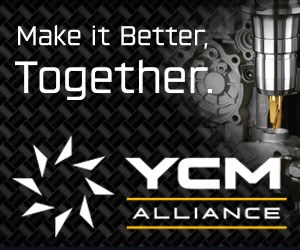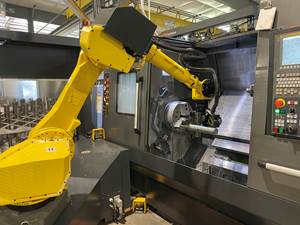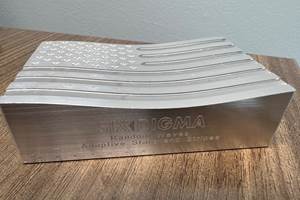Job Shop ERP: What Should You Look For?
An independent ERP advisor offers seven points to consider when evaluating an ERP system’s functions and features.
Share




The most important thing to know when you are investing in an enterprise resource planning (ERP) system is what objective you hope to achieve. The ERP system can be a means to achieve key business outcomes such as improved customer service, reduced lead time, improved quality, reduced asset turns, higher productivity and improved, more timely decision making. For job shops, one distinctive factor is that these companies don’t typically have dedicated IT support on staff. This makes it all the more important for the system chosen to be a good organizational match.
With that in mind, here are seven points to consider when evaluating a new ERP system’s functions and features:
1. Integration. Look for ERP features that remove manual processes and duplicate data entry. The system should let data flow seamlessly, integrating information to get quotes out as quickly and accurately as possible. Consider solutions that integrate release schedules, assemblies, job scheduling and more to avoid machine bottlenecks and increase job throughput. Be sure shipping integrates seamlessly so customers can track their orders.
2. Maintenance and Scheduling. Automated features should help your company schedule maintenance. Tracking maintenance puts companies in a better position to reduce the risk of lost production and costly downtime. For instance, can the software set triggers and track maintenance requirements within the production schedule? Many companies find improved machine uptime from scheduled maintenance cycles. Automating this area helps improve quality, shrink maintenance costs, and reduce the need for emergency repairs. Be sure there is a high level of integration between maintenance and production schedules.
3. Parts Tracking and Job Tracking. How well does the system improve visibility throughout the shop? Is it easy to see exactly where a given job is throughout the production cycle? The system should provide production tracking, including both detailed and summarized reports. Data is more valuable when it is highly integrated with material management, shop operations, and scheduling. Be sure the system provides the ability to track raw material and components from cradle to grave.
4. Document Management. Many organizations experience bottlenecks when handling documents, work instructions, blueprints/drawings and quality reports. When evaluating ERP, make sure document management, complete with revision control, is fully integrated into the system. Automating approvals and revisions helps companies comply with quality standards. The system should provide check-in/check-out capabilities, ease of sharing, and the ability to attach documents to jobs and have them carry through from beginning to end. Again, document management features have a high potential for ROI when report tracking and management are handled seamlessly within the ERP system.
5. Material Control and Inventory Management. Seek out features that help improve inventory costing. Do the systems being considered automate the physical flow of materials and seamlessly manage the procure-to-pay business cycle? Companies benefit when they improve purchasing management, including requirements identification. Look for increased visibility into the flow of purchase orders, contract management, and invoice handling.
6. Data Collection. Many shops capture data on paper and then “hand-jam” the data into a legacy ERP system or stand-alone spreadsheets. And some shops do not capture production data, material transactions or other such information at all. By adding shopfloor data collection kiosks, mobile devices or bar coding, key data is updated in real time and is more accurate. Providing valuable information to managers and executives allows for better business decisions, and visibility is improved throughout the shop.
7. Business Intelligence. The ERP system should offer business intelligence features that help users “take action” so relevant shop floor and production data gets in the hands of those able to make improved business decisions. Does the system visually aggregate data into displays that use colors, gages, graphs and other visual representations to display trends, averages, unusual results, compliance with goals or expectations? Shopfloor workers should be able to easily access real-time data visualizations with pre-built performance indicators, including customized displays fitting the needs of functional areas.
About the author: Dennis Gilhooley is a senior consultant with Ultra Consultants, a firm advising manufacturers of various sizes on ERP implementation. He has more than 15 years of experience in business process improvement, management consulting, ERP implementation and lean manufacturing.
Related Content
Same Headcount, Double the Sales: Successful Job Shop Automation
Doubling sales requires more than just robots. Pro Products’ staff works in tandem with robots, performing inspection and other value-added activities.
Read MoreHow I Made It: Amy Skrzypczak, CNC Machinist, Westminster Tool
At just 28 years old, Amy Skrzypczak is already logging her ninth year as a CNC machinist. While during high school Skrzypczak may not have guessed that she’d soon be running an electrical discharge machining (EDM) department, after attending her local community college she found a home among the “misfits” at Westminster Tool. Today, she oversees the company’s wire EDM operations and feels grateful to have avoided more well-worn career paths.
Read MoreBuilding Machines and Apprenticeships In-House: 5-Axis Live
Universal machines were the main draw of Grob’s 5-Axis Live — though the company’s apprenticeship and support proved equally impressive.
Read MoreWorkholding Fixtures Save Over 4,500 Hours of Labor Annually
All World Machinery Supply designs each fixture to minimize the number of operations, resulting in reduced handling and idle spindle time.
Read MoreRead Next
2025 Top Shops Benchmarking Survey Now Open Through April 30
Modern Machine Shop's Top Shops Benchmarking Survey is now open, offering metalworking and machining operations actionable feedback across several shopfloor and business metrics.
Read MoreShop Tour Video: You've Never Seen a Manufacturing Facility Like This
In the latest installment of our “View From My Shop” series, explore Marathon Precision’s multi-process approach to manufacturing, where blacksmiths and hand-forged dies meet state-of-the-art CNC machining. Discover how restoring classic muscle cars and building custom art projects creates a dynamic shop culture — and draws top talent to this unique and innovative metalworking facility.
Read MoreSetting Up the Building Blocks for a Digital Factory
Woodward Inc. spent over a year developing an API to connect machines to its digital factory. Caron Engineering’s MiConnect has cut most of this process while also granting the shop greater access to machine information.
Read More






























